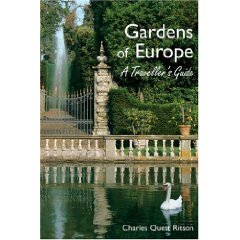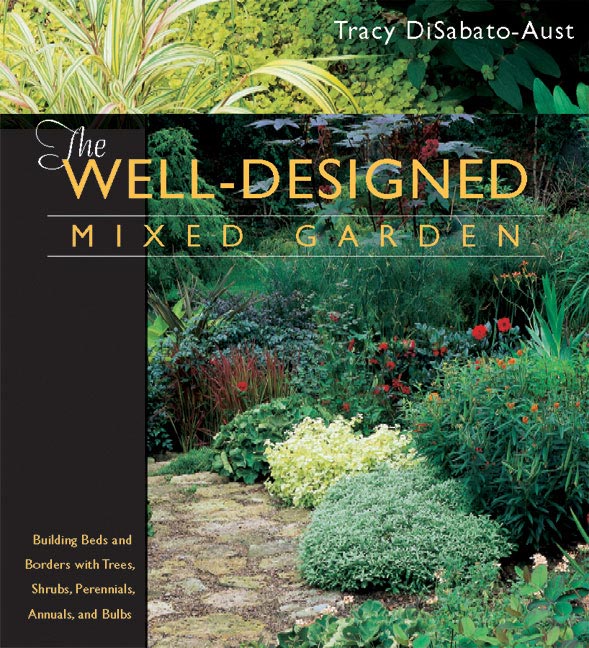Lessons From Italian Gardens For American Gardeners
I’m just returning from an amazing trip to Italy where my husband Jim and I competed for Team USA in the Duathlon World Championship in Rimini. Please go to my triathlon page if you would like to read more about this fantastic experience. When I wasn’t racing, eating (a lot) or sightseeing, I had the opportunity to visit two beautiful gardens in Florence-Villa La Pietra and Villa Gamberaia. These were highly recommended to me, as must sees, by Charles Quest-Ritson a friend, colleague, and author of the book Gardens of Europe. I was particularly struck by the breathtaking views of Florence from Villa Gamberaia. However I think I was just as touched by the tiniest gardens on the window sills, or patios of the Italian’s apartments and condominiums, as well as their small country gardens. In many ways I felt a strong spiritual connection in Italy — the home of my ancestor. Both my grandfathers who emigrated as children from Italy were avid gardeners and I attribute my love of gardening to them. My grandmother was an incredible cook—making her own pasta, sauces etc. (I didn’t get this trait!). My parents were both into fashion and shoes, which the Italians do so well!! I was definitely at home with these warm, friendly people who embrace everything about life.
Duathlon World Championship in Rimini. Please go to my triathlon page if you would like to read more about this fantastic experience. When I wasn’t racing, eating (a lot) or sightseeing, I had the opportunity to visit two beautiful gardens in Florence-Villa La Pietra and Villa Gamberaia. These were highly recommended to me, as must sees, by Charles Quest-Ritson a friend, colleague, and author of the book Gardens of Europe. I was particularly struck by the breathtaking views of Florence from Villa Gamberaia. However I think I was just as touched by the tiniest gardens on the window sills, or patios of the Italian’s apartments and condominiums, as well as their small country gardens. In many ways I felt a strong spiritual connection in Italy — the home of my ancestor. Both my grandfathers who emigrated as children from Italy were avid gardeners and I attribute my love of gardening to them. My grandmother was an incredible cook—making her own pasta, sauces etc. (I didn’t get this trait!). My parents were both into fashion and shoes, which the Italians do so well!! I was definitely at home with these warm, friendly people who embrace everything about life.
Click “Continue Reading” below for Italian garden ideas….but first, here’s a slide show with some photos I took while in Italy. Enjoy!
Italian Garden Ideas
*Most Italians live in condos or apartments but still love plants and have containers and window boxes enhancing their small spaces–right now the florist crop Cyclamen were popular and could be found sitting on window sills. Italians will line pots of plants out on the pavement to create a hedge effect around their space mimicking the hedging in large formal Italian gardens which create “rooms”. This is a wonderful technique for city gardeners to adopt in the US.
*Italians who live in villas in the country side or who have small country homes normally garden with vegetables and herbs but also some ornamentals–grapes, garlic, lettuce, olives, cherries, figs, artichokes,apples and peaches are abundant and sometime espaliered to create enclosure. They are often planted among ornamentals–as ornamentals. This is a great technique for American gardeners to incorporate into their beds & borders which will bring fresh fruit, vegetables, and herbs to the table.
*Large Tuscan gardens like Villa La Pietra and Villa Gamberaia (one of the premier Italian Villas in Tuscany) are in the Renaissance Garden Style. Design elements which we can adopt include:
A. Gardens are a peaceful retreat from a hectic life style
B. Vegetables, fruits, and herbs are woven into the design and appear ornamental–some fruit trees are trained as arches or over pergolas
C. Hedging with boxwood et al create living walls and are used to outline beds and create enclosure or rooms
D. Space is symmetrically divided (symmetrical layout is the hallmark of any Italian garden) with the main axis of the home being the main garden axis– and often divided in a quadrilateral fashion (4 beds) with a center circle bed or water feature–my back garden is designed in this fashion with 4 square beds and a circular focal center bed. Think in shapes using squares, rectangles, triangles and circles.
E. Vertical forms from Italian cypress are prevalent in the gardens and countryside–we can mimic with upright junipers or arborvitae.
F. Terracing is used to divide spaces into rooms–this can even be used in the smallest garden to make it appear larger by changing levels. Hardscaping is key in Italy due to the harsh climate—pick out some fun stone for your own garden. Trellises may also divide space and again can be used in small gardens.
G. Potted plants are often lined out to create rhythm (movement) in the garden by their repetition–using citrus trees (Italians love their lemon trees and scented geraniums). They are often places in balanced symmetry. Americans can easily do the same and bring plants inside for the winter in cold climates.
H. Water is always a part of classical Italian gardens—it doesn’t have to be a grand fountain–even the smallest container of water can bring a cooling effect and bring the sky to ground level in a small American garden.
I. Personal touches are often a part of the garden and can be seen in statues, coat-of-arms on garden walls etc.–incorporate your personal passions in your American garden as I’ve done with a sculpture of our son Zachary. ENJOY A TOUCH OF ITALY IN YOUR GARDEN…CIAO!


